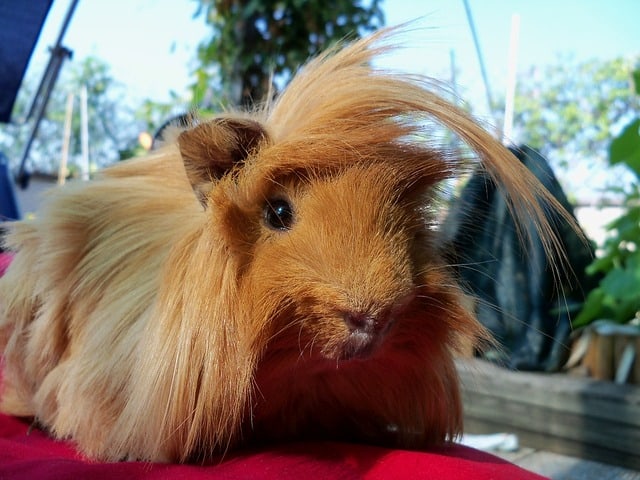
The Peruvian guinea pig is a rodent native to the Andes and widespread in our homes as a pet, thanks to its quiet and affectionate nature.
The Peruvian guinea pig is a small rodent used as a pet due to its quiet and affectionate character. It requires little care but it is important to know its ethological needs to ensure maximum well-being.
Native to the highlands of the Andes in South America, this four-legged companion is used to living in dry climates and with not too high temperatures.
In nature, guinea pigs live in groups of 5-10 specimens and therefore suffer if they are raised alone. When it is decided to adopt them, it is preferable to raise at least one pair of guinea pigs .
Peruvian guinea pig in the house
These animals can be grown indoors by placing them in spacious cages equipped with water and food. The dimensions must be sufficient to favor the freedom of movement of the specimens that live there.
During the day, however, it is important that they can also be free to move outside the cage in a safe and harmless environment.
Always ensure the cleanliness of their environment away from heat sources . It is preferable to ensure a constant temperature, never too high, and the right air exchange.
Long-haired Peruvian guinea pig
The most obvious and recognizable feature of this type of guinea pig is its long hair . While creating a nice coat, it is preferable to control the growth of the hair by trimming it when necessary.
It is also necessary to take care of the coat, which must be cleaned and brushed a couple of times a day. The color of the coat can be unique or specimens with two chromatic shades can be observed. More rare, however, is to meet guinea pigs whose coat has three colors. The most common colors are white, brown and black.
Peruvian short-haired guinea pig
In reality, the short-haired guinea pigs are not exactly the Peruvian ones. These are short-haired specimens, also known as “English”.
Peruvian guinea pig character
These animals tend to be docile, shy, shy, and fearful of new and unknown situations. However, they are very good at communicating by emitting various types of sounds depending on the situations in which they find themselves.
They are therefore considered “talkative” animals thanks to the numerous vocalizations they are able to emit. They rarely exhibit aggressive behavior and behave in a sweet and affectionate manner.
They usually tend to be activated in the morning and in the evening, avoiding moving during the central hours of the day. This aspect is important to understand what are the typical and natural habits of these cute little animals.
Food and Nutrition for Peruvian guinea pig
At home, guinea pigs require a balanced diet adapted to their energy expenditure. In addition, it is important to ensure the consumption of fresh foods that promote the consumption of teeth, which continue to grow throughout life. It follows a completely vegetable diet being a strictly herbivorous animal .
They must have food available both day and night as they love to eat at any time of the day.
However, it is important that foods are high in fiber but low in calories. In addition to hay and seeds, you may consume vegetables, preferably rich in Vitamin C . These animals, in fact, may present deficiencies in this sense. The presence of fresh and clean water must be ensured every day, perhaps with the appropriate drop troughs.
Does the Peruvian guinea pig stink?
This four-legged companion does not emit particular unpleasant odors . Obviously it is necessary to ensure daily cleaning of the litter by changing it when necessary.
Proper hygiene, therefore, should avoid problems of this type.
How long he lives
The guinea pig lives on average 4-5 years and can reach a maximum of 7 years if grown in optimal conditions. He is very affected by stressful situations and is a very fearful animal.
Even contact, which must be gradually accustomed to, can be a source of stress for this animal.
Usually these animals do not require any vaccination and do not host fleas , as is the case for dogs and cats . Before adopting a guinea pig it is however advisable to inquire about the presence of an experienced veterinarian who can take care of the animal in case of need.
The price
The cost for the purchase of a specimen is quite low and can fluctuate between $40 to $60. Whenever possible, it is good to opt for the adoption of the guinea pig through an exchange between individuals.
In any case, it is advisable to first make sure that you have the necessary conditions to make these animals grow in health.






